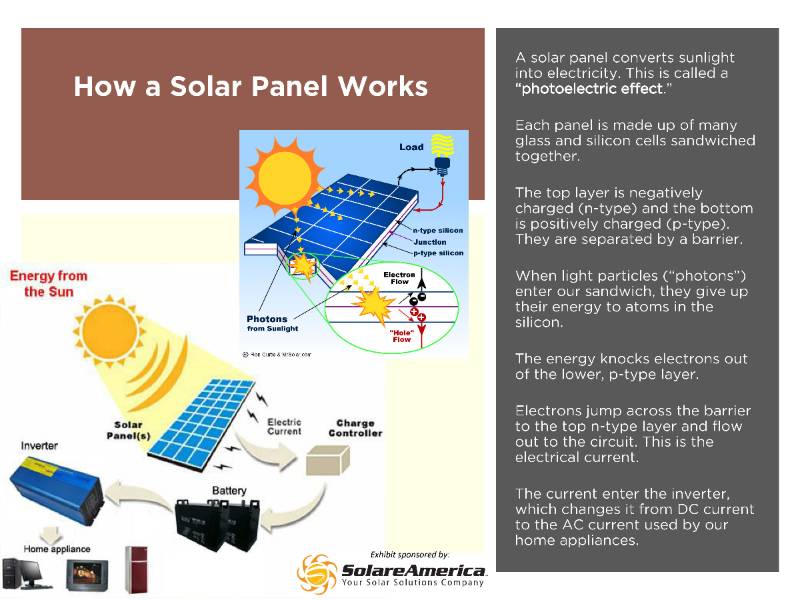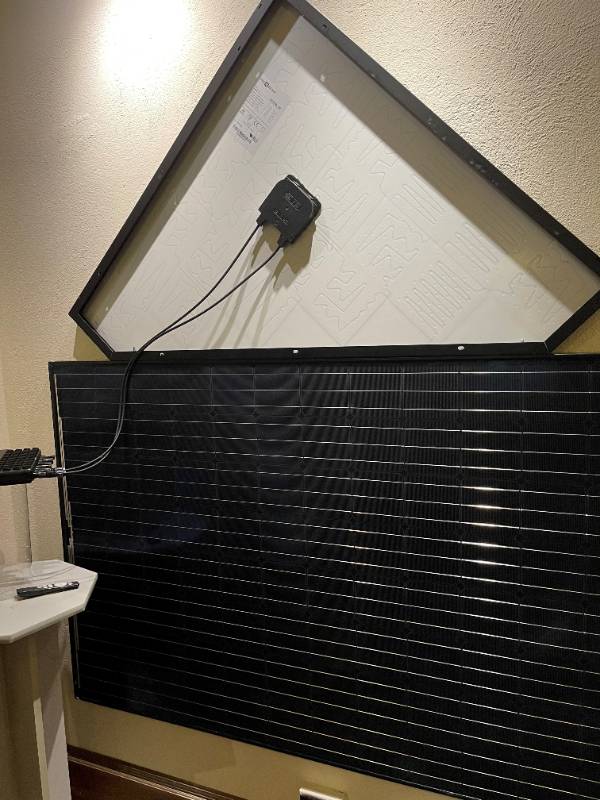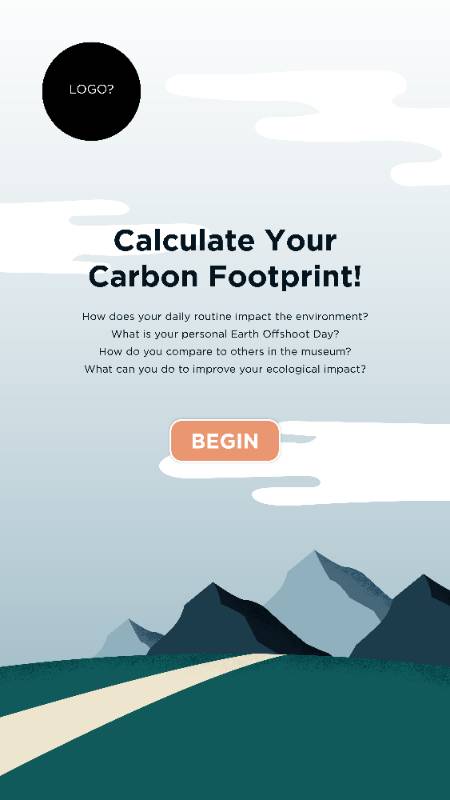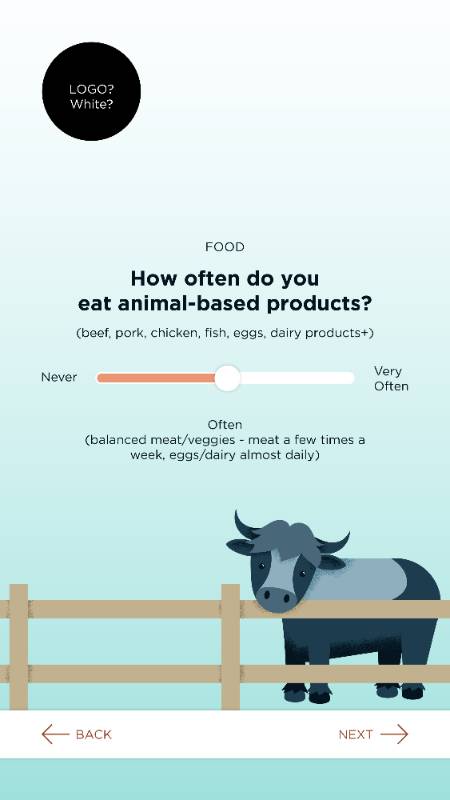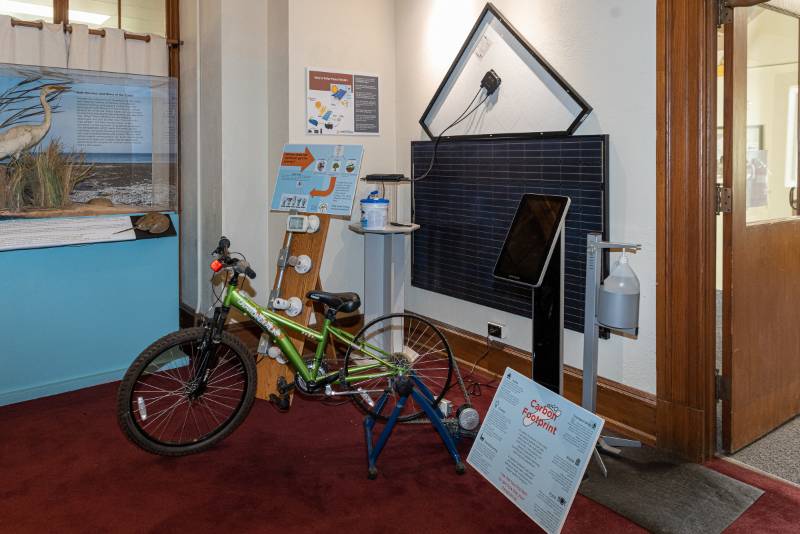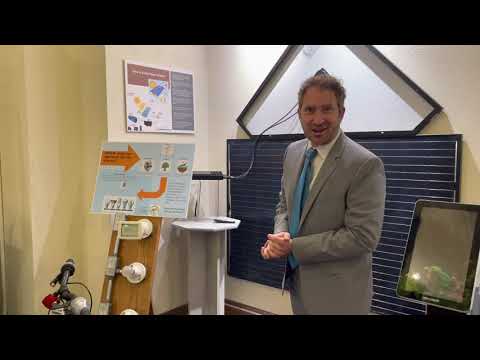-
How A Solar Panel Works
A solar panel converts sunlight into electricity. This is called a “photoelectric
effect.” Each panel is made of many glass and silicon cells sandwiched together. The
top is negatively charged (n-type) and the bottom is positively charged (p-type).
They are separated by a barrier.
When light particles, called “photons,” enter our sandwich, they give up their energy
to the atoms in the silicon. The energy knocks electrons out of the lower, p-type
layer. Electrons jump across the barrier to the top n-type layer and flow out to the
circuit. This is the electrical current.
The current enters the inverter, which changes it from DC current to the AC Current
used by our home appliances.
Solar panels and inverter on loan from SolareAmerica.
-
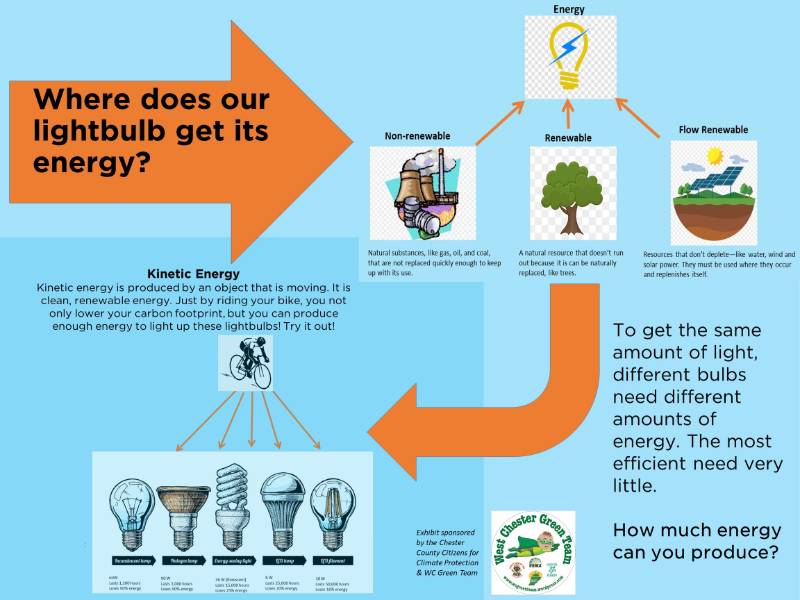
How Much Energy Can You Produce?
Kinetic energy is produced by an object that is moving. It is clean, renewable energy.
Just by riding your bike, you not only lower your carbon footprint, but you produce
enough energy to light up the lightbulbs that are on display!
Why are there so many lightbulbs connected to this bike? To get the same amount of
light, different bulbs need different amounts of energy. The most efficient need very
little energy. The least efficient – such as the common incandescent lightbulb, or
the halogen lights that you may have outside your house, take up a lot of energy to
light—and lose about 90% of it to heat (not light) that is generated.
Since around 40% of our household electricity is generated through carbon-based, non-renewable
resources, it’s especially important to choose your lightbulbs wisely!
Bicycle on loan from the West Chester Green Team.
-
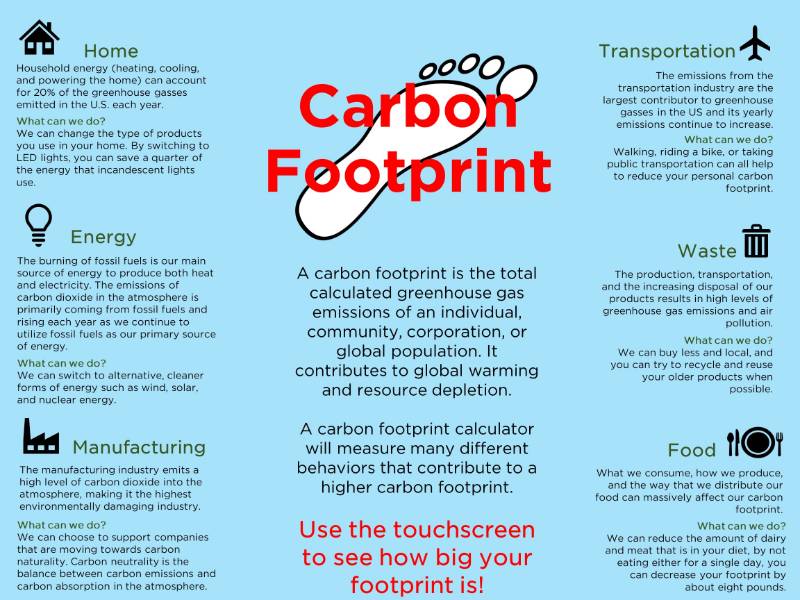
Understanding Your Carbon Footprint
A carbon footprint is the total calculated greenhouse gas emissions of an individual,
community, corporation, or global population. It contributes to global warming and
resource depletion.
The average carbon footprint for a person in the United States is 16 tons, one of
the highest rates in the world. Globally, the average is closer to 4 tons. To have
the best chance of avoiding a 2℃ rise in global temperatures, the average global carbon footprint per year needs
to drop under 2 tons by 2050.
Our behaviors contribute to our carbon footprint. Choices we make regarding our energy
use, transportation, food, clothing, and even what we do with our waste will all determine
our own carbon footprint—and will impact the earth as a whole.
-
Calculate Your Carbon Footprint
Carbon Footprint Calculators were created to help us assess our collective and individual
impacts on the environment. A carbon footprint calculator will measure many different
behaviors that contribute to a higher carbon footprint, and suggest areas where we
can work on minimizing our impacts.
Art + Design student Hannah Vannoy and Computer Science student Brandon Barker created
our own carbon footprint calculator.
Try it out here! [link coming in June]
Carbon footprint calculator designed by Hannah Vannoy and Brandon Barker with support
from the Museum of Anthropology and Archaeology, and an Office of Sustainability Research
and Creative Activities Grant.

